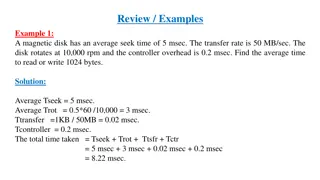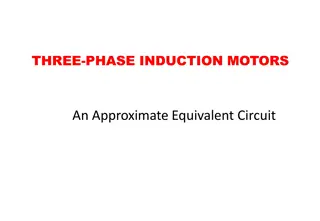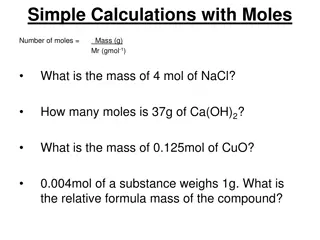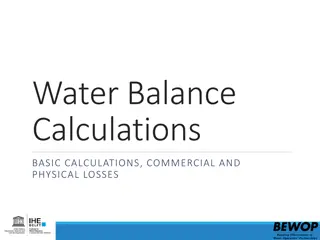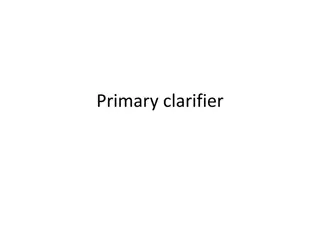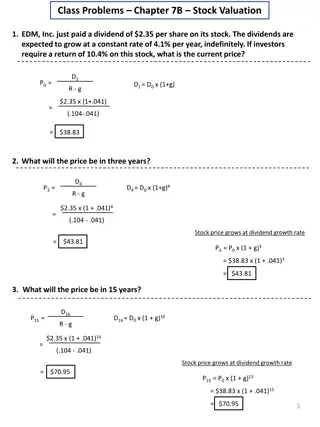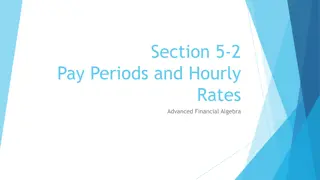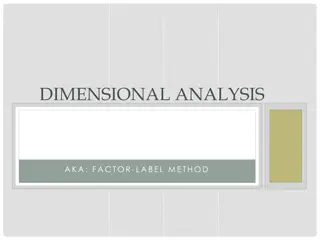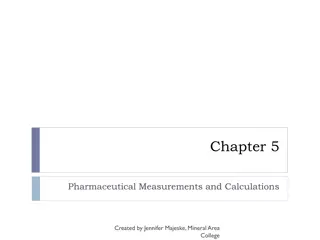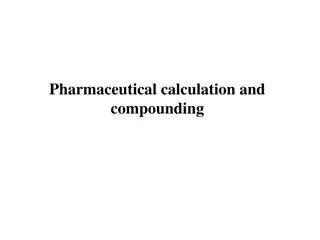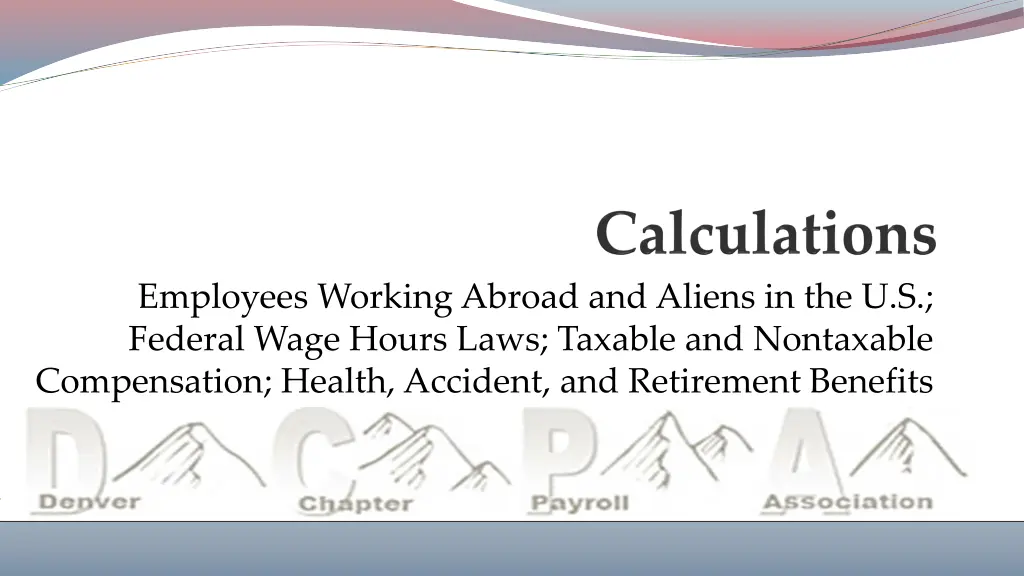
Federal Wage and Hour Laws: Employee Benefits and Taxation
Understand how employees working abroad, aliens in the U.S., federal wage and hour laws, taxable and nontaxable compensation, as well as health, accident, and retirement benefits are regulated. Learn about foreign housing cost exclusions, calculations for base housing amounts, and substantial presence tests. Also, explore examples of calculating gross pay under the Fair Labor Standards Act (FLSA) for both hourly and nonexempt employees.
Download Presentation

Please find below an Image/Link to download the presentation.
The content on the website is provided AS IS for your information and personal use only. It may not be sold, licensed, or shared on other websites without obtaining consent from the author. If you encounter any issues during the download, it is possible that the publisher has removed the file from their server.
You are allowed to download the files provided on this website for personal or commercial use, subject to the condition that they are used lawfully. All files are the property of their respective owners.
The content on the website is provided AS IS for your information and personal use only. It may not be sold, licensed, or shared on other websites without obtaining consent from the author.
E N D
Presentation Transcript
Employees Working Abroad and Aliens in the U.S.; Federal Wage Hours Laws; Taxable and Nontaxable Compensation; Health, Accident, and Retirement Benefits
Problem # 1 An employee qualifies for the foreign housing cost exclusion under the physical presence test. The employee has reasonable housing expenses of $28,925. Calculate the foreign housing cost exclusion for the employee. Answer: $11,981 $105,900 (foreign earned income exclusion) x .16 = $16,944 (base housing) $28,925 - $16,944 = $11,981 2
Problem # 2 An employee qualifies for the foreign housing cost exclusion under the physical presence test for 332 days. The employee has reasonable housing expenses of $22,000. Calculate the base housing amount for the employee. Answer: $15,411.44 $105,900 (foreign earned income exclusion) x .16 = $16,944 (base housing) $16,944 / 365 = $46.42 $46.42 x 332 = $15,411.44 3
Problem # 3 An alien employee is present in the U.S. for 162 days during the current year, 117 days during the first preceding year, and 142 days during the second preceding year. How many days is the employee present in the U.S. under the substantial presence test? Answer: 224 days 162 + (117 / 3) + (142 / 6) 162 + 39 + 23.66 = 224 4
Problem # 4 An hourly employee makes $8.75 per hour and is scheduled to work 38 hours in a workweek. During the past workweek, the employee worked 44 hours. Under FLSA, calculate the gross pay for the employee. Answer: $402.52 $8.75 x 44 = $385.00 44 40 = 4 overtime hours $385.00 / 44 = $8.75 $8.75 x .5 = $4.375 $4.38 x 4 = $17.52 $385.00 + $17.52 = $402.52 5
Problem # 5 An nonexempt employee receives an hourly wage of $11.35 for a 40-hour workweek. During the past workweek, the employee worked 48 hours. Under FLSA, calculate the total earnings for the employee. Answer: $590.24 $11.35 x 48 = $544.80 48 40 = 8 overtime hours $544.80 / 48 = $11.35 $11.35 x .5 = $5.68 $5.68 x 8 = $45.44 $544.80 + $45.44 = $590.24 6
Problem # 6 An nonexempt employee receives an hourly wage of $12.13 and receives $2.00 per hour for shift differential for working the late shift. During the past workweek, the employee worked 46 hours on the late shift. Under FLSA, calculate the total earnings for the employee. Answer: $692.40 ($12.13 + $2.00) x 46 = $649.98 46 40 = 6 overtime hours $649.98 / 46 = $14.13 $14.13 x .5 = $7.07 $7.07 x 6 = $42.42 $649.98 + $42.42 = $692.40 7
Problem # 7 A production worker is paid $0.55 per unit under a piece-rate agreement. During the past workweek, the employee produced 1300 units in 47 hours. Under FLSA, calculate the total earnings for the employee. Answer: $768.27 $0.55 x 1300 = $715.00 47 40 = 7 overtime hours $715.00 / 47 = $15.21 $15.21 x .5 = $7.61 $7.61 x 7 = $53.27 $715.00 + $53.27 = $768.27 8
Problem # 8 An nonexempt employee receives a nondiscretionary bonus of $500.00 in addition to an hourly wage of $13.50. During the past workweek, the employee worked 48 hours. Under FLSA, calculate the total earnings for the employee. Answer: $1297.84 $13.50 x 48 = $648 + $500.00 = $1198.00 48 40 = 8 overtime hours $1198.00 / 48 = $24.9583 $24.96 x .5 = $12.48 $12.48 x 8 = $99.84 $1198 + $99.84 = $1297.84 9
Problem # 9 Calculate the employee s Medicare taxable wages from the following information. Gross Wages: YTD Taxable Wages: Cafeteria Plan Deductions: 401(k) deferral: $2,800.00 $16,800.00 $125.00 $280.00 Answer: $2,675.00 $2,800.00 $125.00 = $2,675.00 10
Problem # 10 Calculate the employee s federal income taxable wages from the following information. Gross Wages: YTD Taxable Wages: Cafeteria Plan Deductions: 401(k) deferral: $4,400.00 $30,800.00 $315.00 $590.00 Answer: $3,495.00 $4,400.00 $315.00 - $590.00 = $3,495 11
Problem # 11 Calculate the bi-weekly imputed income on the group-term life insurance provided by the employer. The insurance coverage is 3 times the employee s annual salary. The employee s annual salary is $95,000 and will be 49 on December 31st. Answer: $16.27 $95,000.00 x 3 = $285,000.00 $285,000.00 $50,000.00 = $235,000.00 $235,000.00 / 1000 = $235 $235.00 x .15 = $35.25 (monthly) $35.25 x 12 = $423 (annual) $423/ 26 = $16.27 12
Problem # 12 An employee is to receive a year-end bonus of $9,000.00 The employer has agreed to pay all taxes on the bonus. The employee has been paid $85,000.00 year-to-date. The state supplemental wage rate is 10.23%. Calculate the gross pay for this year-end bonus payment. Answer: $14,970.06 22% + 10.23% + 6.2% + 1.45% = 39.88% 100% 39.88% = 60.12% $9,000.00 / 60.12% = $14,970.06 Proof: Taxes: $3,293.41 + $1531.44 + $928.14 + $217.07 = $5,970.06 $14,970.06 - $5,970.06= $9,000.00 13
Problem # 13 An employee is to receive a year-end bonus of $50,000.00 The employer has agreed to pay all taxes on the bonus. The employee has been paid $235,000.00 year-to-date and the employee works in a state with no supplemental wage rate. Calculate the gross pay for this year-end bonus payment. Answer: $66,093.86 22% + 1.45% + .90% = 24.35% 100% 24.35% = 75.65% $50,000.00 / 75.65% = $66,093.86 Proof: Taxes: $14,540.65 + $958.36 + $594.85 = $16,093.86 $66,093.86 - $16,093.86 = $50,000.00 14
Problem # 14 An employee is to receive a year-end bonus of $500,000.00 The employer has agreed to pay all taxes on the bonus. The employee has been paid $1,175,500.00 year-to-date in supplemental wages and the employee works in a state with a supplemental wage withholding rate of 4.63%. Calculate the gross pay for this year-end bonus payment. Answer: $892,538.38 37% + 4.63% +1.45% + .90% = 43.98% 100% 43.98% = 56.02% $500,000.00 / 56.02% = $892,538.38 Proof: Taxes: $330,239.20 + $41,324.53 + $12,941.81 + $8,032.85 = $392,538.39 $892,538.38 - $392,538.39 = $499,999.99 15



